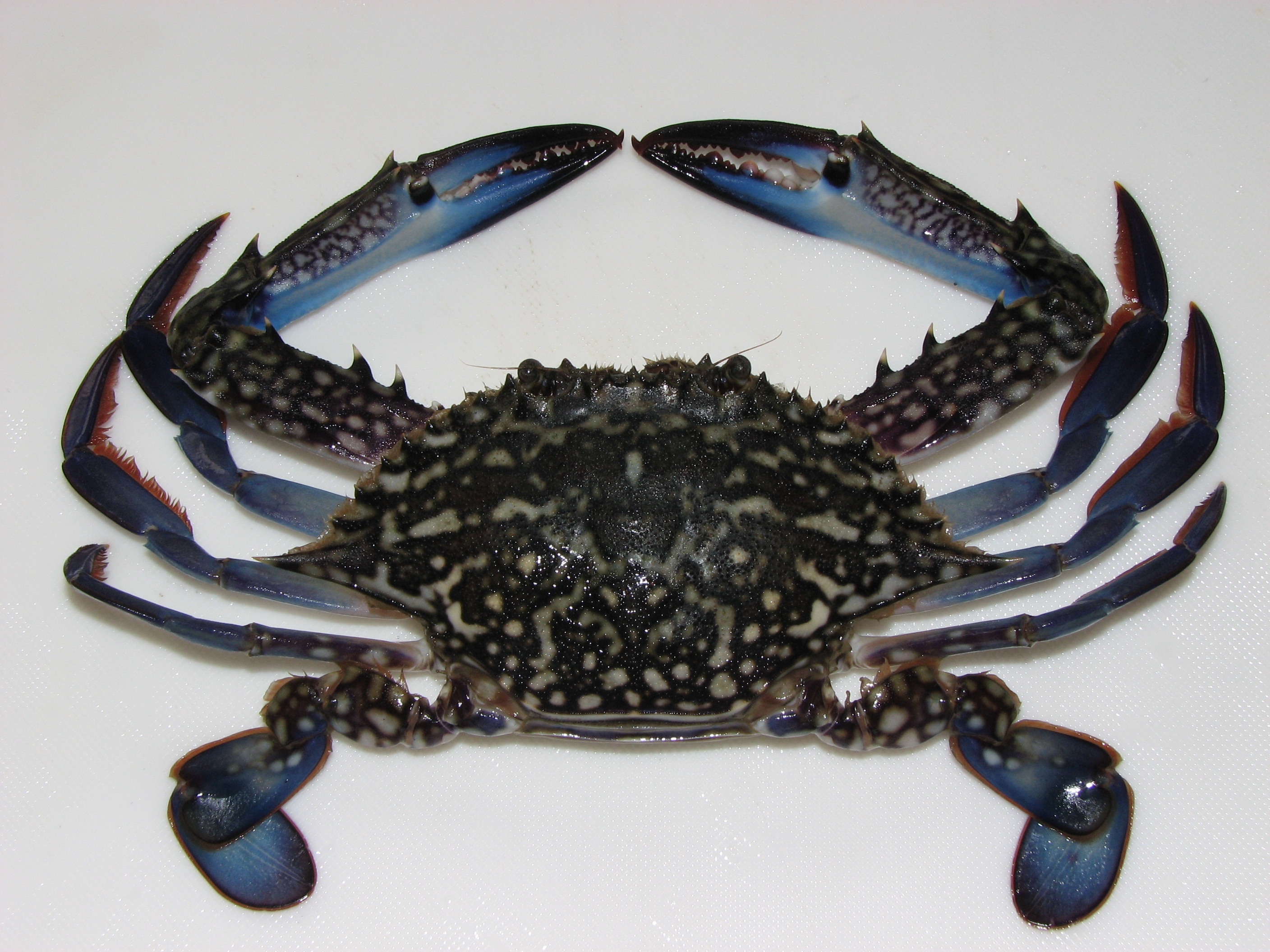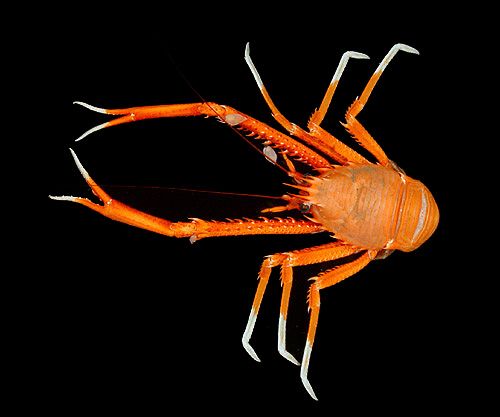|
List Of Crabs Of New Zealand
In the waters in and around New Zealand, 77 living species of crabs (and 10 species of crab-like Anomura) have been recorded, along with a further 24 species of fossil crabs (marked with an Dagger (typography), obelisk). Of the extant crabs, 37 are endemism, endemic to New Zealand (marked in boldface). The taxonomy below follows Ng ''et al.'' (2008) for the extant species, and De Grave ''et al.'' (2009) for the fossils. Almost all the species are marine, with a single freshwater species, ''Amarinus lacustris'' (Hymenosomatidae). An updated checklist published in 2010 lists 167 species of Brachyura, plus a little over 50 species of crab-like Anomura. This list (of N.Z. Decapoda) has been republished with annotations in 2011. Crab, Brachyura Section Dromiacea ;Dromiidae *''Petalomera wilsoni'' (Fulton & Grant, 1902) ;Homolidae *''Dagnaudus petterdi'' (Grant, 1905) *''Homola orientalis'' Henderson, 1888 *''Yaldwynopsis spinimanus'' (Griffin, 1965) ;Latreilliidae *''Eplumula au ... [...More Info...] [...Related Items...] OR: [Wikipedia] [Google] [Baidu] |
Anomura
Anomura (sometimes Anomala) is a group of decapod crustaceans, including hermit crabs and others. Although the names of many anomurans include the word ''crab'', all true crabs are in the sister group to the Anomura, the Brachyura (the two groups together form the clade Meiura). Description The name Anomura derives from an old classification in which Reptantia, reptant decapods were divided into Macrura (long-tailed), Brachyura (short-tailed) and Anomura (differently-tailed). The alternative name Anomala reflects the unusual variety of forms in this group; whereas all crabs share some obvious similarities, the various groups of anomurans are quite dissimilar. The group has been moulded by several instances of carcinisation – the development of a crab-like body form. Thus, the king crabs (Lithodidae), porcelain crabs (Porcellanidae) and hairy stone crab (Lomisidae) are all separate instances of carcinisation. As decapods (meaning ''ten-legged''), anomurans have ten pereiopods, ... [...More Info...] [...Related Items...] OR: [Wikipedia] [Google] [Baidu] |
Homolidae
The family Homolidae, known as carrier crabs or porter crabs, contains 14 genera of marine crabs. They mostly live on the continental slope and continental shelf, and are rarely encountered. Members of the Homolidae have their fifth pereiopods (last pair of walking legs) in a sub-dorsal position, which allows them to hold objects in place over the rear half of the carapace. The objects carried include sponges, black corals and gorgonians, and this behaviour may be a defence mechanism against predators. Some species have been observed carrying living sea urchins in a symbiotic relationship which allows them to benefit from the protection of the urchin's dangerous spikes. The genus was erected by Dutch zoologist Wilhem De Haan in 1839. Genera A total of 14 genera are currently recognised in the family: *'' Dagnaudus'' Guinot & Richer de Forges, 1995 *'' Gordonopsis'' Guinot & Richer de Forges, 1995 *'' Homola'' Leach, 1816 *'' Homolax'' Alcock, 1899 *'' Homolochunia'' ... [...More Info...] [...Related Items...] OR: [Wikipedia] [Google] [Baidu] |
Lyreidus Waitakiensis
''Lyreidus'' is a genus Genus (; : genera ) is a taxonomic rank above species and below family (taxonomy), family as used in the biological classification of extant taxon, living and fossil organisms as well as Virus classification#ICTV classification, viruses. In bino ... of crabs in the family Raninidae, containing the following species: *'' Lyreidus brevifrons'' Sakai, 1937 *'' Lyreidus stenops'' Wood-Mason, 1887 *'' Lyreidus tridentatus'' de Haan, 1841 References Crabs {{Raninoida-stub ... [...More Info...] [...Related Items...] OR: [Wikipedia] [Google] [Baidu] |
Lyreidus Elegans
''Lyreidus'' is a genus of crabs in the family Raninidae, containing the following species: *'' Lyreidus brevifrons'' Sakai, 1937 *'' Lyreidus stenops'' Wood-Mason, 1887 *''Lyreidus tridentatus ''Lyreidus tridentatus'' is a species of crab in the family Raninidae. References External links Image Crabs Crustaceans described in 1841 {{Raninoida-stub ...'' de Haan, 1841 References Crabs {{Raninoida-stub ... [...More Info...] [...Related Items...] OR: [Wikipedia] [Google] [Baidu] |
Raninidae
Raninidae is a family of unusual crabs, sometimes known as "frog crabs", on account of their frog-like appearance. They are taken by most scientists to be quite primitive among the true crabs. They closely resemble the (unrelated) mole crabs, due to parallel evolution or convergent evolution. In both groups, the claws are modified into tools for digging, and the body is a rounded shape that is easy to bury in sand. Unlike most other true crabs, the abdomens of raninids are not curled under the cephalothorax. They spend most of their time buried in the sand with their eyes popping out so they can grab unaware prey. They also emerge for mating. Raninids are omnivores and some have been found to have consumed Sardinella, crab, shrimp, bivalve, ray, hydroid, copepod, and squid. The earliest fossil attributable to the family Raninidae dates from the Albian. Description Raninids' dorsal surfaces have varying textures: smooth, pitted, granular, inclined or fungiform nodes, erode ... [...More Info...] [...Related Items...] OR: [Wikipedia] [Google] [Baidu] |
Raninoida
Raninoida is a taxonomic section of the crabs, containing a single superfamily, Raninoidea. This group of crabs is unlike most, with the abdomen not being folded under the thorax. It comprises 46 extant species, and nearly 200 species known only from fossil A fossil (from Classical Latin , ) is any preserved remains, impression, or trace of any once-living thing from a past geological age. Examples include bones, shells, exoskeletons, stone imprints of animals or microbes, objects preserve ...s. Below is a cladogram showing Raninoidea's placement within Brachyura: References Crabs Taxa named by Wilhem de Haan {{Raninoida-stub ... [...More Info...] [...Related Items...] OR: [Wikipedia] [Google] [Baidu] |
Eplumula Australiensis
''Eplumula'' is a genus of crabs in the family Latreilliidae. It is found off the coasts of eastern Asia, commonly China, Japan, and Taiwan Taiwan, officially the Republic of China (ROC), is a country in East Asia. The main geography of Taiwan, island of Taiwan, also known as ''Formosa'', lies between the East China Sea, East and South China Seas in the northwestern Pacific Ocea .... References Dromiacea Decapod genera {{Dromiacea-stub ... [...More Info...] [...Related Items...] OR: [Wikipedia] [Google] [Baidu] |
Latreilliidae
Latreilliidae is a small family of crabs. They are relatively small, long-legged crabs found on soft bottoms at depths of up in mostly tropical and subtemperate waters around the world. Their carapace is very small and doesn’t cover the bases of their legs, which protrude from the cephalothorax in a spider-like manner. The family and its type genus are named after Pierre André Latreille. The oldest known fossils from the Latreillidae have been dated to the middle of the Cretaceous period. It comprises seven extant species. Distribution Most species in Latreilliidae are relatively concentrated in the Indo-Pacific region, but sometimes may be found in adjacent regions. They are usually found in the mesopelagic zone of these regions. Five of the seven species are located mainly in this region(''L. metanesa, L. pennifera, L. valida, E. australiensis,'' and ''E. phalangium''). Sightings of some of these species have been reported outside of this region: ''L. metanesa'' hav ... [...More Info...] [...Related Items...] OR: [Wikipedia] [Google] [Baidu] |

